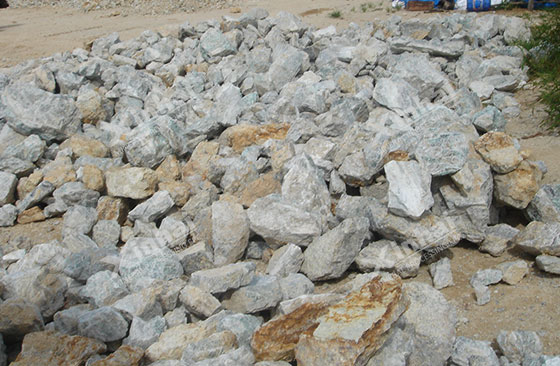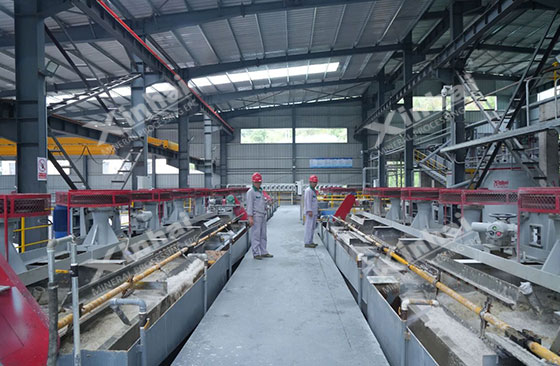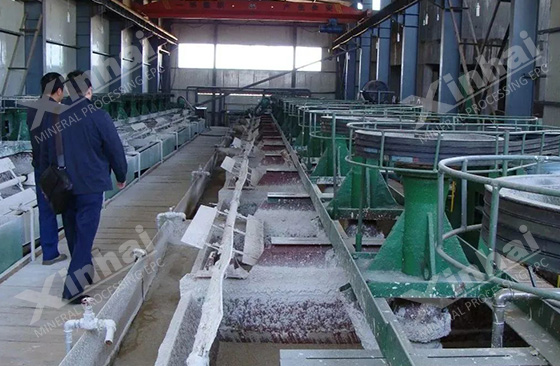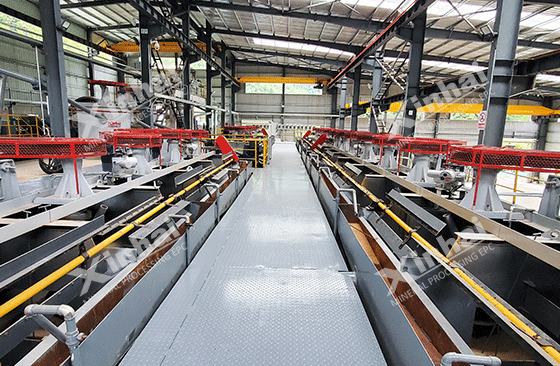As a strategically important non-metallic mineral resource, fluorite is widely used in traditional industries such as metallurgy, chemical industry, building materials, ceramics, medicine, atomic energy and fluorine chemical industry as well as emerging industries. With the continuous development of social economy, the demand for fluorite ore in the industrial field is increasing. Therefore, it is of great significance to study and apply efficient fluorite ore recovery methods and related theories. According to the different gangue minerals, fluorite ore can be divided into four types: quartz type, carbonate type, barite type and sulfide ore type. Due to the different characteristics of these types of ores, targeted beneficiation methods and reagent systems must be adopted. The following will introduce the beneficiation process of different types of fluorite ore in detail.

Use the table of contents below to navigate through the guide:
01Fluorite Ore Beneficiation Methods
The commonly used fluorite ore beneficiation methods currently include hand selection, gravity selection, and flotation. Hand selection is mainly used for ores with clear boundaries between fluorite and gangue minerals and easy to distinguish with the naked eye, and is usually used as an auxiliary means of other beneficiation methods. Gravity selection mainly refers to the heavy medium pre-selection process. The heavy medium cyclone can pre-select fluorite ore, which can discard most of the quartz and reduce the impact of subsequent grinding operations. With the depletion of fluorite ore and the mutual interpenetration of fluorite and gangue ore, only fine grinding can achieve monomer dissociation. The fine-grained ore after fine grinding needs to be flotated. Flotation is currently the main method for separating fluorite ore from gangue minerals.

02Quartz and sulfide fluorite ore beneficiation
The beneficiation process of quartz and sulfide fluorite is relatively simple, mainly using flotation. For quartz fluorite, oleic acid or oxidized paraffin soap is often used as a collector, sodium carbonate is used to adjust the pH value, and water glass is used to inhibit quartz. After multiple concentrations, high-quality fluorite concentrate can be obtained. For sulfide fluorite, xanthate or dithiophosphate must be used to float out the sulfide minerals, and then fatty acid collectors must be used to float fluorite to ensure the purity and grade of the fluorite concentrate. These methods ensure the efficient separation and recovery of fluorite through reasonable reagents and process adjustments.

03Carbonate-type fluorite ore beneficiation
For carbonate-type fluorite, both fluorite and calcite minerals contain calcium ions, and their solubility is similar. When coexisting in solution, these minerals may undergo mutual conversion, making their separation complicated. Therefore, the selection of appropriate depressants is crucial for the effective separation of fluorite and calcite. Commonly used depressants include water glass, sodium hexametaphosphate and sodium humate, which can effectively adjust the flotation behavior of calcite and fluorite. When the pH range is 8 to 9.5, oleic acid can capture calcite and fluorite well, so depressants are needed to adjust the flotation difference of these two minerals to achieve effective separation. Reasonable reagent ratio and process adjustment can greatly improve the separation efficiency of fluorite and calcite, ensuring the purity and quality of the final fluorite concentrate.

04Barite-type fluorite ore beneficiation
The separation of fluorite and barite, whose cations belong to the same alkali metal ions, is the difficulty of fluorite flotation. There are two methods to separate fluorite ore and barite: one is to first inhibit the flotation of fluorite by barite, and the other is to inhibit the flotation of barite by fluorite ore. It has been found in practice that trivalent cations such as Al3+ and Fe3+ have an inhibitory effect on barite, and divalent barium salts and lead salts can activate barite to inhibit fluorite. The key to separating fluorite ore from barite lies in the role of selective inhibitors, and for fluorite ore with a high barite content, spiral chute-shaking table and other gravity separation methods can be used to effectively separate fluorite ore and barite.

To sum up, different types of fluorite ores require more targeted beneficiation processes and chemical systems due to differences in gangue minerals. Hand selection, gravity separation and flotation are commonly used fluorite ore beneficiation methods, among which the flotation process is particularly effective when processing finely ground fluorspar ore. For quartz-type, carbonate-type, barite-type and sulfide-type fluorite ores, through reasonable selection of collectors, inhibitors and technological processes, gangue minerals and fluorite can be effectively separated from each other, thereby obtaining high-quality of fluorspar concentrate. As the demand for fluorspar continues to increase, further optimization and innovation of mineral processing technology will provide an important guarantee for the efficient development and utilization of fluorite ore resources.


 marketing@ytxinhai.com
marketing@ytxinhai.com  0086 13810327080
0086 13810327080 






































































































 CHAT
CHAT MESSAGE
MESSAGE







